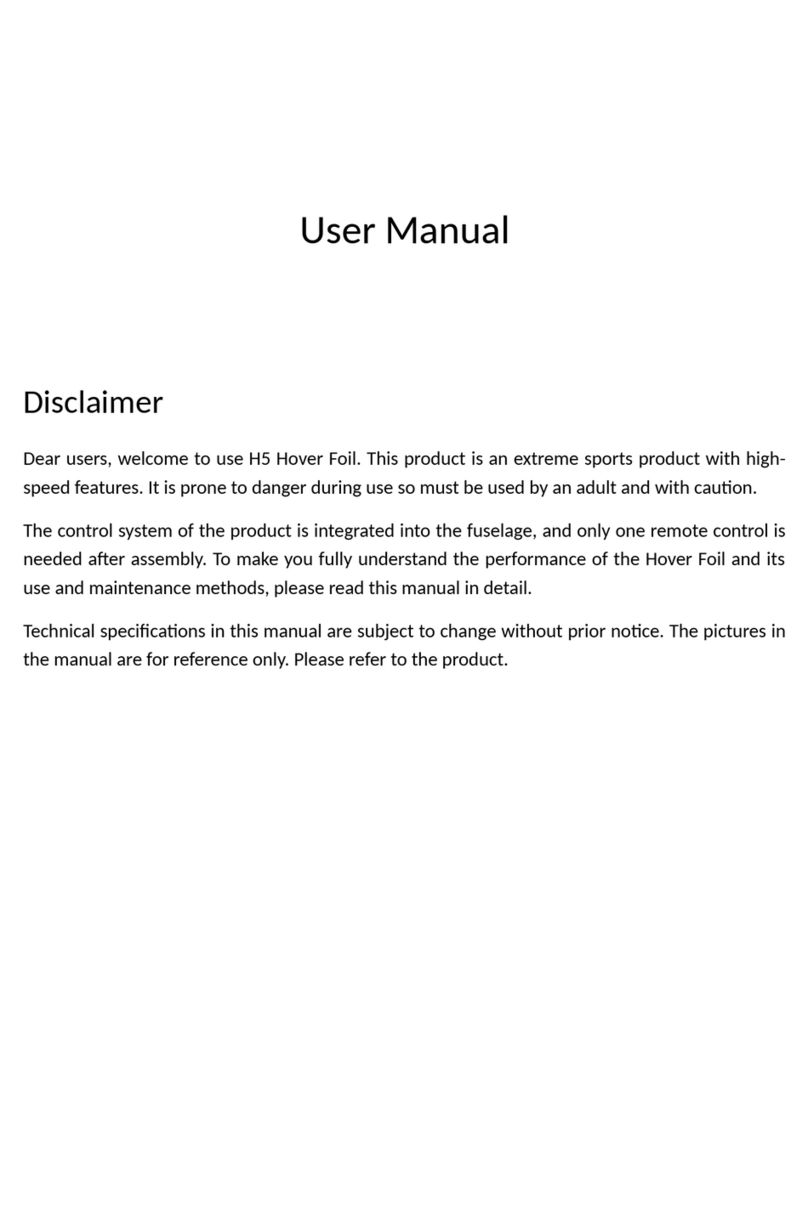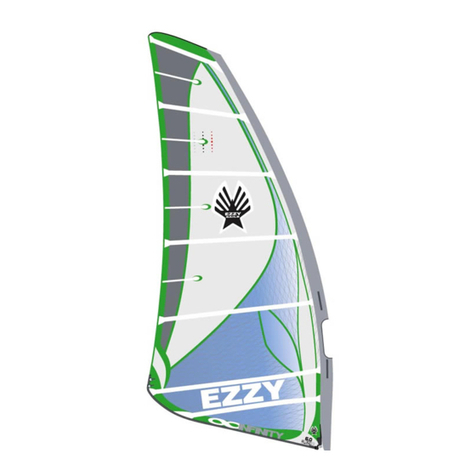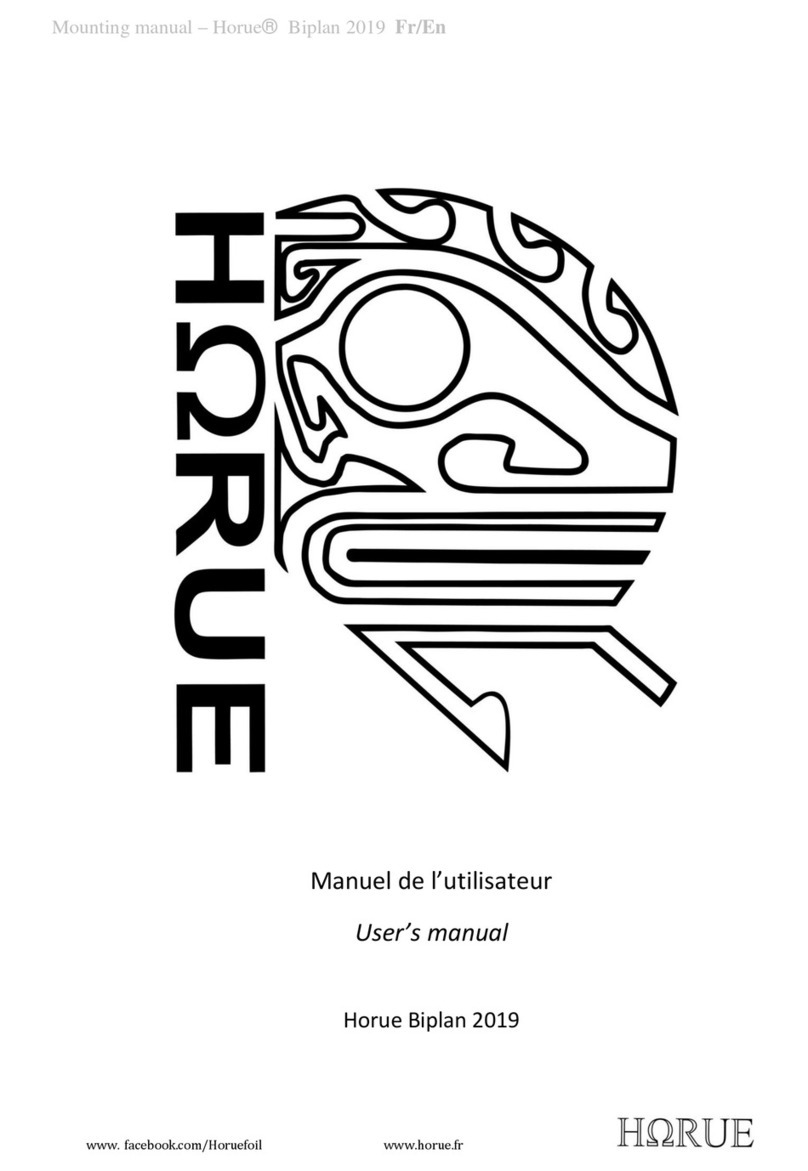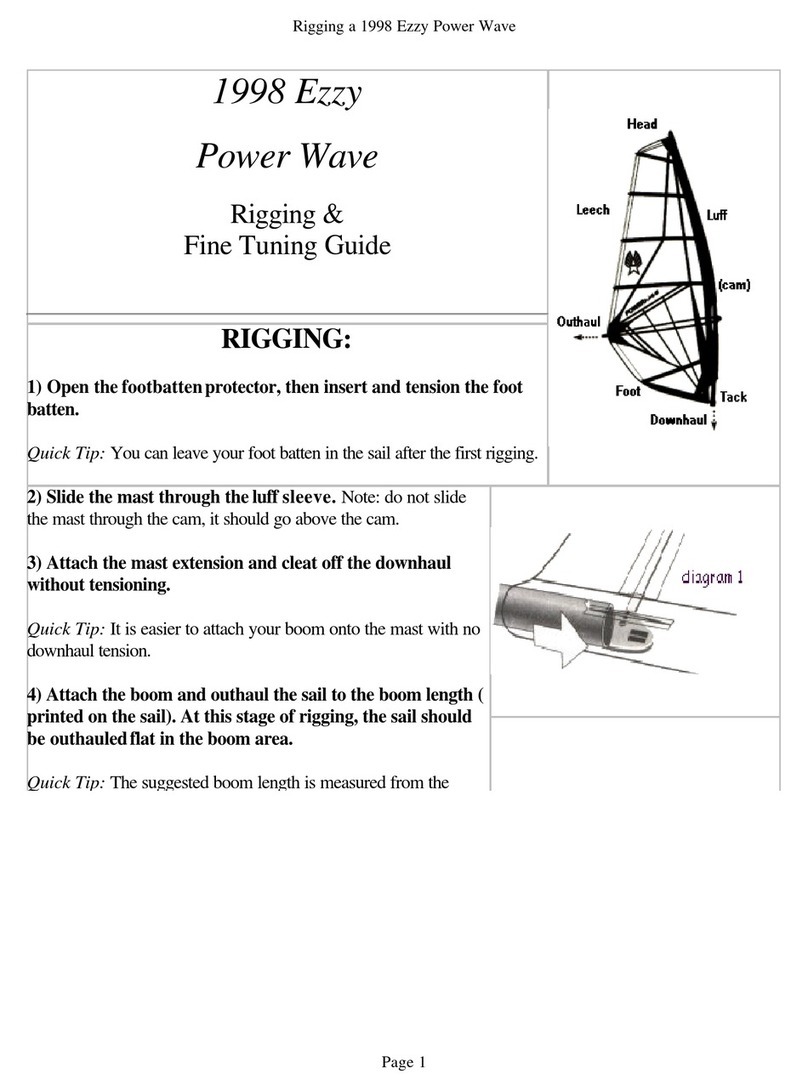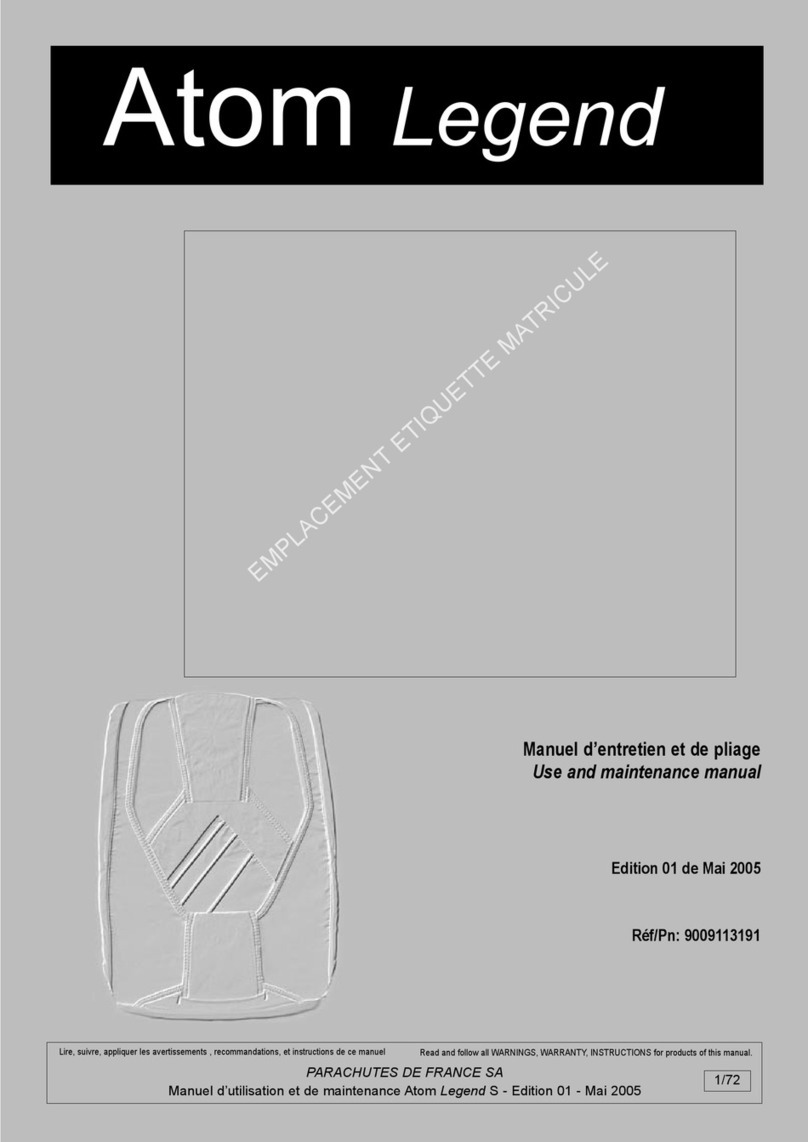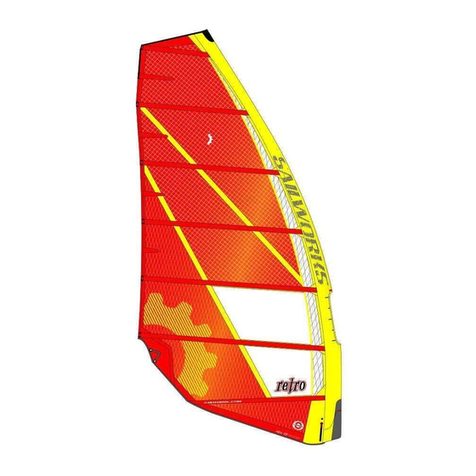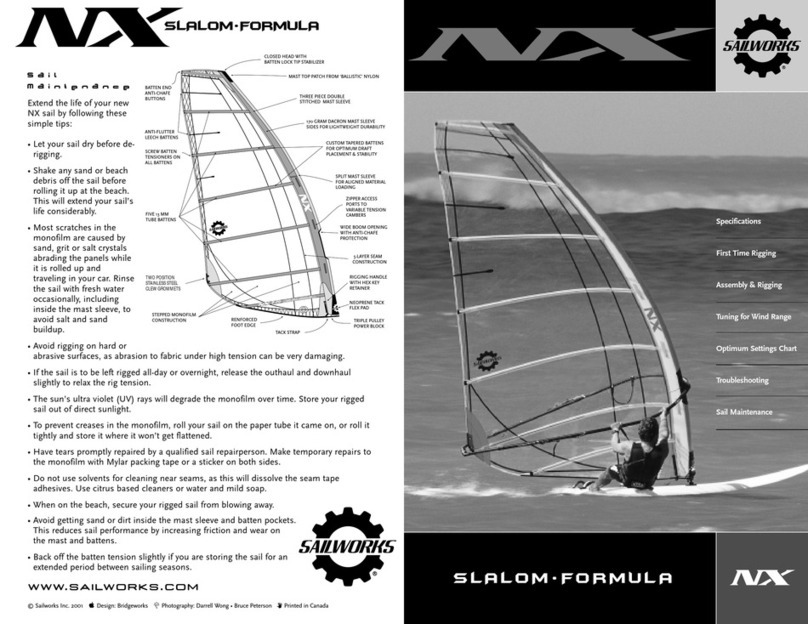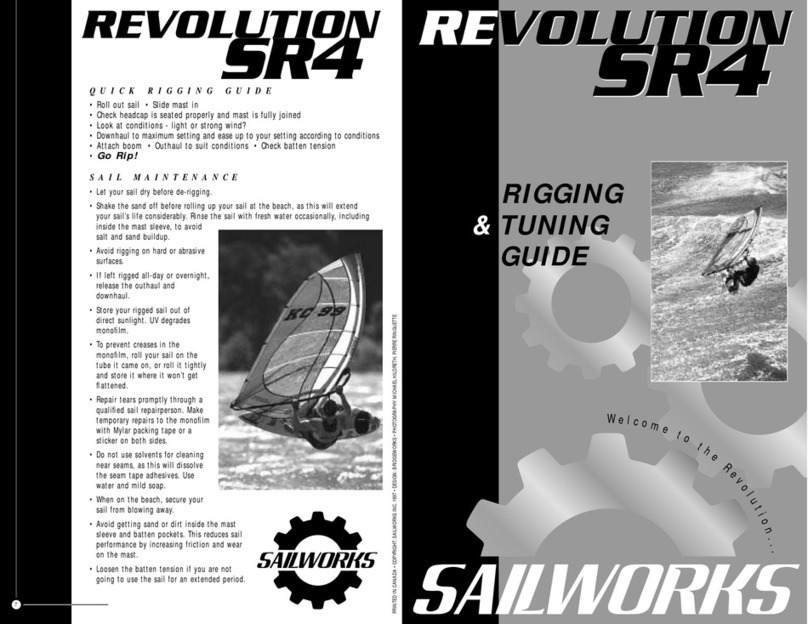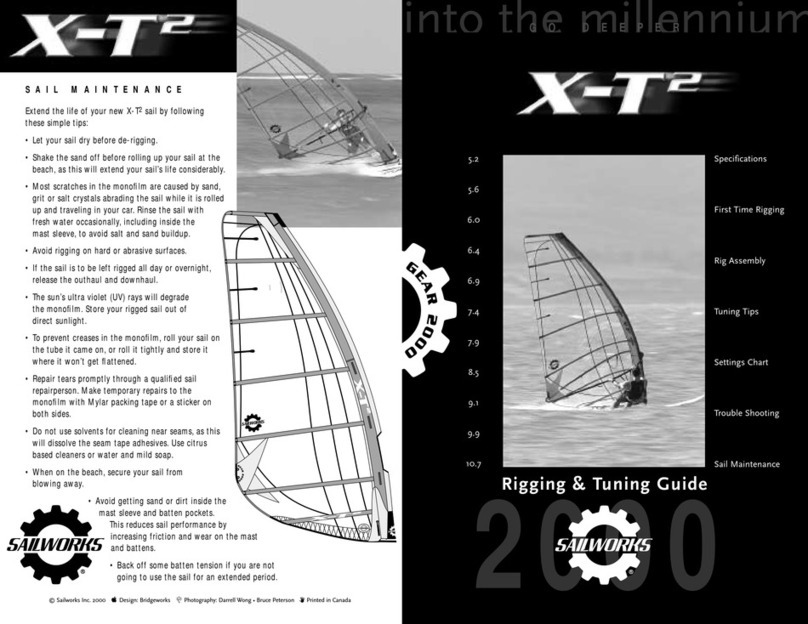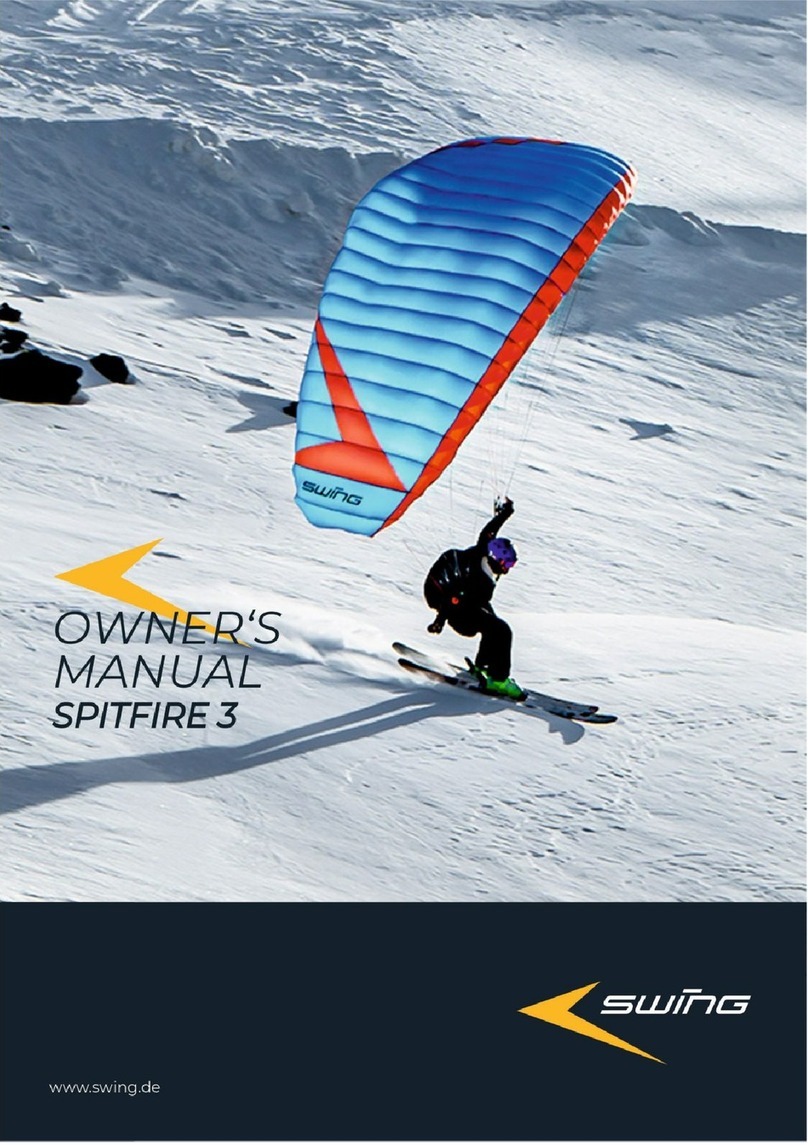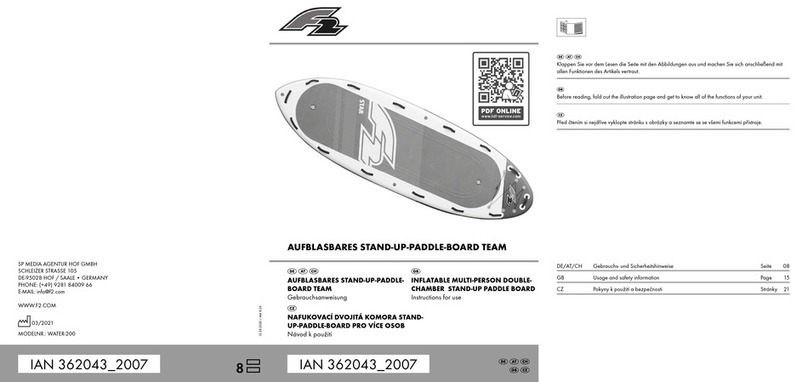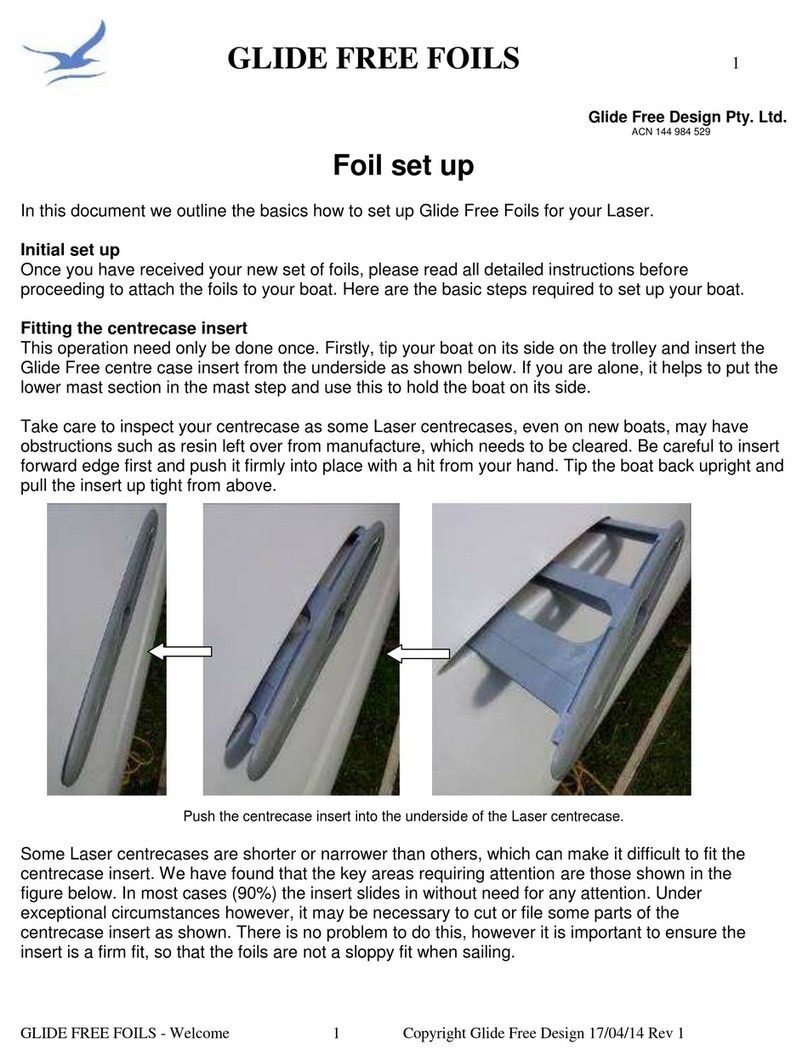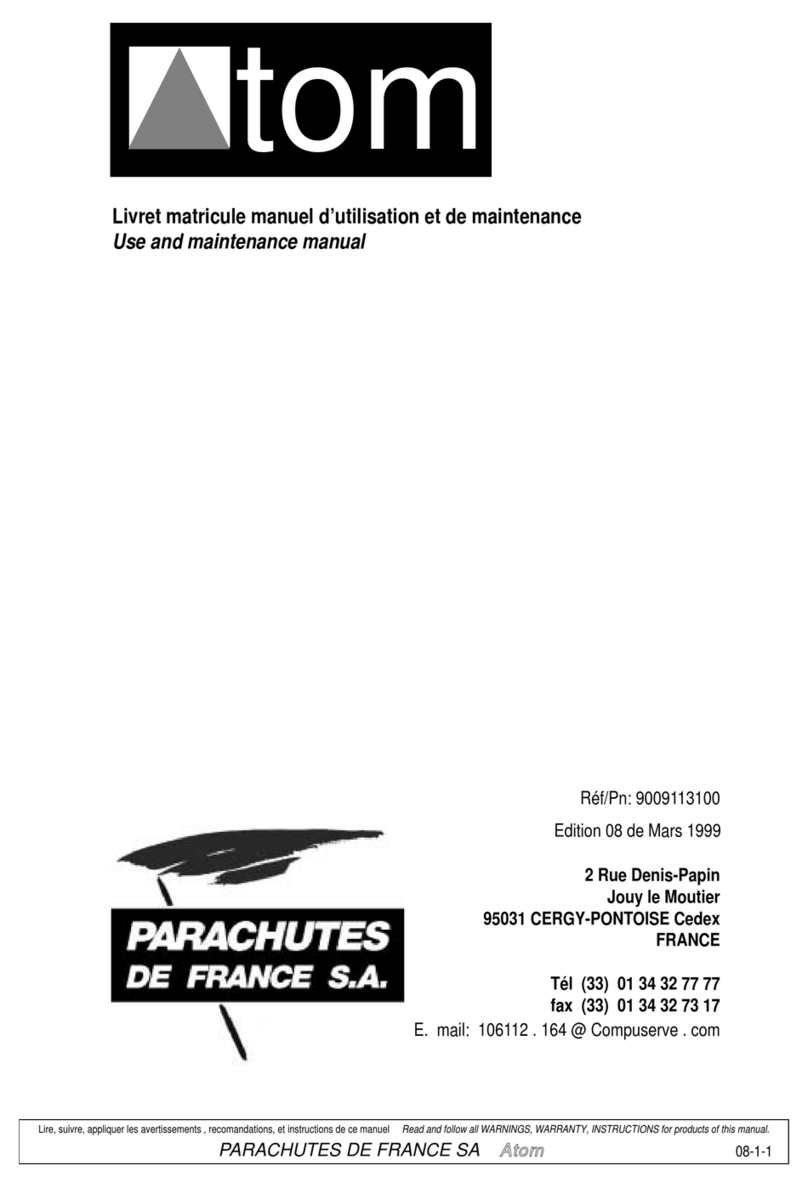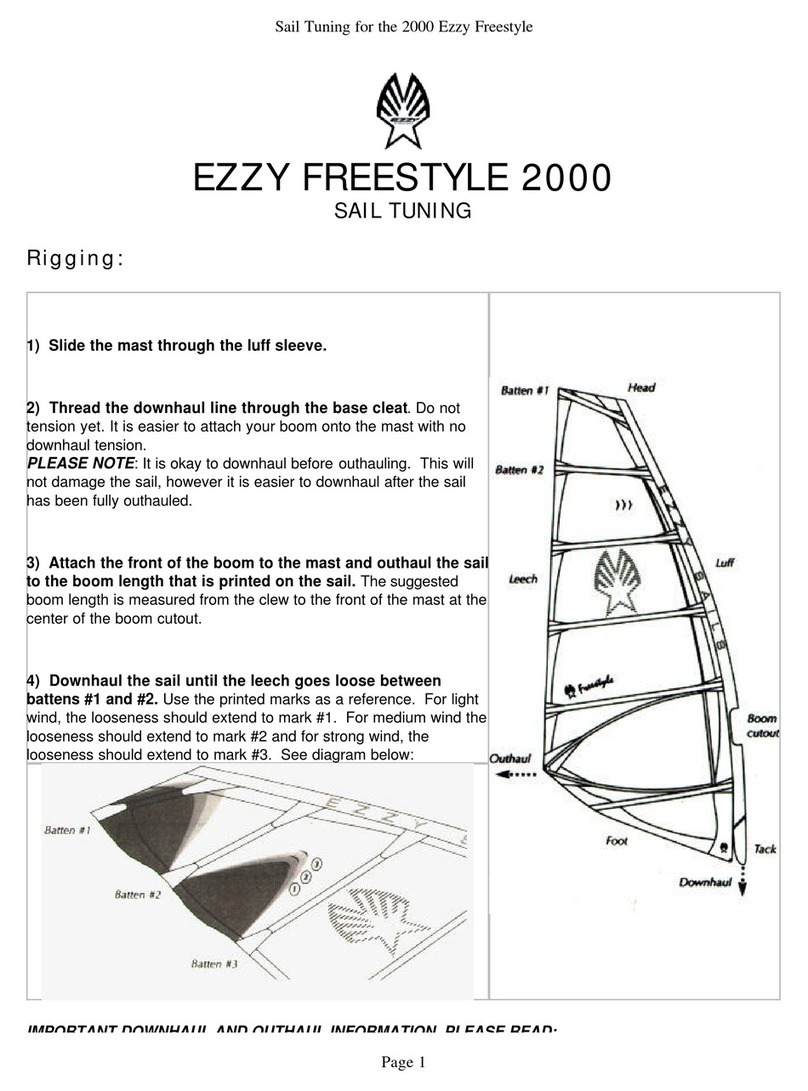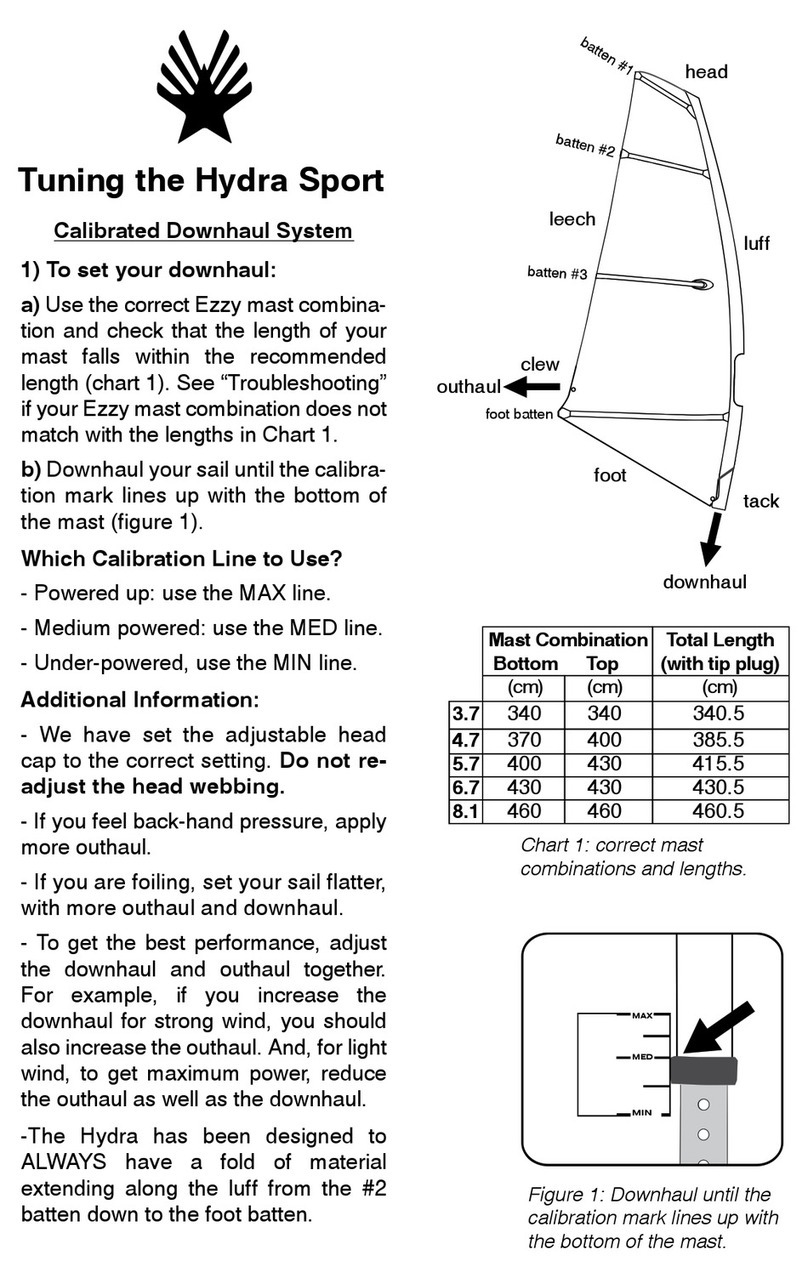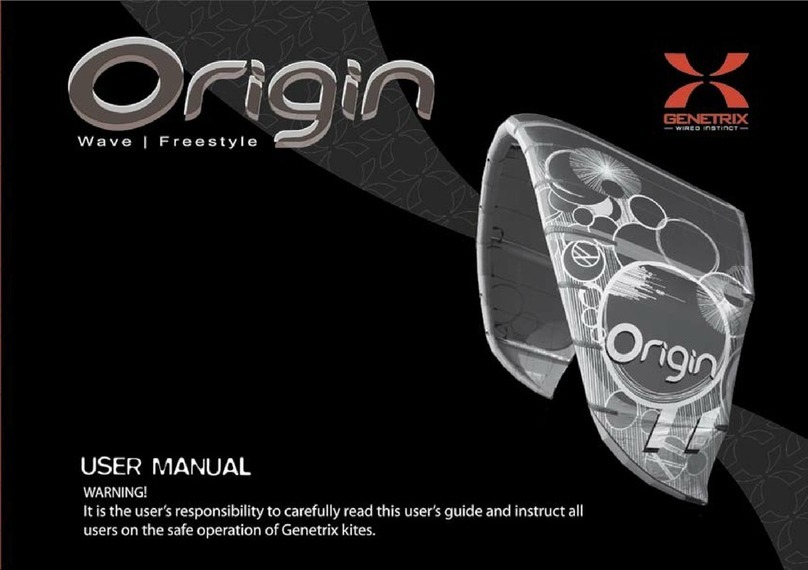
USE THE RIGHT MAST
One of the most important choices you
make when rigging a sail is which mast
you put in the mast sleeve. Or, more
specifically the length, curve and stiffness
of the mast, and how closely these
parameters match the sail. The mast is
quite literally the backbone of the rig and
it governs the sail’s performance. The
mast requirements for the Revo are
printed on the sailbag and at the tack of
the sail. Your mast should be within this
required range, regardless of the brand
or model. The Revolution sails are
designed around “constant curve” masts
that exhibit a nominal MCS curve profile
of 64% at the base and 76% at the tip. If
in doubt about the suitability of your
mast, consult with your Sailworks dealer
or representative, or contact Sailworks
directly through our web page:
www.sailworks.com
Not all sail sizes will work on the same
mast. Sailworks sails are designed
around an equivalency ratio of static
pre-tensioning per square meter. This
means larger sails need morepre-
tensioning and smaller sails need less.
Thus, larger sails need longer and stiffer
masts while smaller sails requireshorter
and softer masts. Two of the most
common compatibility problems are:
i) Using too long, or too stiff a mast.
This restricts wind range by over-
tensioning the sail.
ii) Using too short or too soft a mast.
This restricts wind range by
insufficiently stabilizing the sail.
Each Revo sail size is designed and
balanced on a specific Sailworks mast to
suit conditions typical for the “average”
size sailor (140 - 190 lb./ 63 - 86 kg).
If you arelighter than this average, or
prefer a softer handling feel, consider
using the next mast softer or shorter
listed in the table. Heavier sailors can use
aslightly stiffer mast to increase rig
tension and stability.
Certain Revo sizes (3.2, 3.8, 4.6 and
5.8 m2), are “cross-over” sizes in that
they can be rigged effectively on two
different mast lengths, depending in the
weight of the rider. Sailors over 90
kilograms (200 lbs) should consider using
the next longer (and stiffer) mast than
that recommended on these sizes.
We highly recommend coating your mast
with McLube SailKote™, a dry Teflon
marine lubricant. This lubricant will
dramatically reduces friction along the
mast and makes inserting and removing
the mast much easier.
SET THE HEADCAP LENGTH
All the Revo sails have a double
adjustable headcap system that allows
you to adjust the length at either end
of the strap. This also allows you to
replace the strap at the beach if it
wears out. A spare strap is included
with this rigging guide, and it is long
enough for use with a longer mast.
The strap installed on the sail is the
correct length for the optimum
mast length.
Check the luff length of your sail –
(printed at the tack and on the sailbag),
and compareit to your mast length. If
your mast is shorter than the lufflength,
adjust the headcap strap so the
headcap is as close to the top of the
mast sleeve as you can set it. If your
mast is longer than the lufflength,
estimate the amount of mast that will
extend out the top of the sleeve (mast
length minus luff length). Adjust the
strap so that the top of the headcap is
1-2 cm shorter than this distance away
from the top of the mast sleeve to allow
for the headcap strap to cinch tight.
FIRST TIME RIGGING
